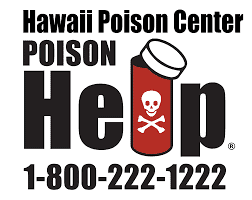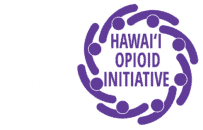TREATMENT RESOURCES
DO YOU NEED ADDICTION TREATMENT OR RECOVERY SUPPORT SERVICES?
Please call Hawai’i CARES (Coordinated Access Resource Entry System) at
(808) 832-3100 or toll-free at 1-800-753-8679
Hours of Operation: 9am-5pm Monday-Friday
Full List of Treatment Providers
Treatment for Narcotic and Opioid Painkiller Addiction
Detoxification and withdrawal
Narcotic and opioid painkiller addiction leads to real changes in certain areas of the brain. Prescription drug addiction alters the circuits responsible for mood and “reward” behaviors. In addition, long-term prescription drug abuse affects virtually all the systems in the body. Cutting off the supply abruptly leads to opioid withdrawal symptoms.
- Symptoms of opioid withdrawal include:
- Craving for drugs
- Diarrhea
- Large pupils
- Yawning
- Abdominal pain
- Chills
- Nausea/vomiting
- Body aches
- Agitation/mood swings
Someone with an established narcotic addiction will usually do almost anything to try to avoid the intensely unpleasant process of withdrawal, which is a major reason for relapse and continued abuse.
Opioid withdrawal can last hours, days or weeks, depending on how long and how much a person has used the drug of choice. After the intense initial symptoms subside, some physical and mental discomfort may persist for weeks.
Medications for Opioid Withdrawal
There are medications that are used to prevent symptoms of opioid withdrawal during detox, easing the person out of physical dependence. The most commonly-used are listed below:
Methadone is a long-acting opioid drug. It activates the same opioid receptors as narcotics, effectively eliminating withdrawal symptoms. Providing the correct dose of methadone prevents opioid withdrawal symptoms and eases drug craving but it does not provide the euphoria. The dose can be slowly tapered off, freeing the person from physical dependence without withdrawal symptoms. Methadone is the most effective known treatment for narcotic addiction.
Buprenorphine and Naloxone (Suboxone) is a newer combination drug that helps for detox from prescription opioid addiction. Buprenorphine activates opioid receptors, reducing drug craving and preventing withdrawal. Naloxone helps prevent misuse of the medication.
Maintenance Therapy After Detox
Experts say psychological and social factors are the main drivers that push addicts back to using. Stress and situations that remind the brain of the drug’s pleasure are common triggers. Most people who go through detox and short-term counseling will relapse to prescription drug abuse.
Studies show that the chances of beating narcotic addiction are better with long-term maintenance therapy with either methadone or buprenorphine paired with naloxone (Zubsolv, Bunavail, Suboxone). These drugs are used during the maintenance phase of treatment. People on these drugs are still opioid-dependent, but they are often freed from their destructive drug addiction. They can return to work, drive without impairment, and function normally in society. Naloxone has also been combined with oxycontin ( Targiniq ER ) to deter abuse by snorting or injecting the drug. A person can still become addicted by taking it orally, however.
Methadone is the best-studied, most effective method of recovery from narcotic addiction. Suboxone, while newer, has gained wide acceptance as maintenance therapy.
Some people have a high rate of relapse when maintenance therapy is stopped, and so they remain on the medicines for decades. In others, maintenance therapy is tapered off over months to years.
Naltrexone (ReVia, Vivitrol) is an opiate receptor-blocking medication used in maintenance therapy for narcotic addiction. Unlike methadone and Suboxone, naltrexone does not activate receptors at all, so it does not reduce opioid withdrawal or craving. However, because naltrexone blocks opiate receptors, a person won’t get high if he or she uses drugs while taking the medicine. The drug is usually ineffective by itself, because people can simply stop taking it and get high shortly after.
Counseling and 12-Step Programs
Narcotics Anonymous (NA) is an international network of community-based meetings for those recovering from drug addiction. Modeled after Alcoholics Anonymous (AA), NA is a 12-step program with a defined process for overcoming narcotic addiction.
NA is an abstinence-based program. In principle, NA is opposed to the use of maintenance therapy. Methadone Anonymous is a 12-step program that acknowledges the value of methadone or Suboxone in recovery from narcotic addiction.
Most experts and treatment centers recommend participation in a 12-step program or other form of counseling. Therapy can take place as an outpatient, or in a residential facility. Alternatives to 12-step programs include:
- Cognitive behavioral therapy
- Motivational interviewing
- Family and couples therapy.
LOCAL RESOURCES
Hep Free Hawai’i
Drug Policy Forum of Hawai’i
Harm Reduction Hawai’i
Methadone clinics in Hawai’i
CHAMP Clinic
Ku Aloha ola Mau
Alcohol and Drug Division (ADAD) website
Find Suboxone Providers in Hawai’i
Find Buprenorphine Providers in Hawai’i
The PATH Clinic – For pregnant & parenting women with addiction issues
808 Youth – A searchable directory of over 700 children and youth programs
Prevention Resource Center, Coalition for a Drug-Free Hawaii
OVERDOSE PREVENTION
See our Overdose & Naloxone page for resources.
HEPATITIS C RESOURCES
SUPPORT FOR FAMILY & LOVED ONES
SUPPORT FOR YOUTH
OTHER SYRINGE EXCHANGES IN AMERICA
NATIONAL & INTERNATIONAL HARM REDUCTION ORGANIZATIONS
EMERGENCY RESOURCES
CRISIS LINE: 808-832-3100
http://health.hawaii.gov/amhd/consumer/access/

